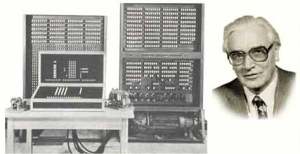
The second generation of computers, covers the period between 1954 and 1964, characterized by the invention of the transistor.
For 50 years, transistors replaced vacuum tubes in the circuits of computers.
The second-generation computers are no longer vacuum tubes, but transistors are smaller and consume less power than previous form of communication with these new computers is using more advanced language machine language, which are called "high-level languages" or programming languages.
The most important characteristics of second generation computers are built
were
electronic transistors to be programmed high-level languages \u200b\u200b
1951, Maurice Wilkes invented microprogramming, which simplifies much CPU development
1956, IBM sold first magnetic disk system, RAMAC [Random Access Method of Accounting and Control]. 50 discs of metal used to 61cm, with 100 tracks per side. It could store 5 megabytes of data and a cost of $ 10,000 per megabyte.
The first programming language for general purpose high-level FORTRAN, was also developed at IBM around this time. (The design of high-level language Plankalkül, 1945 by Konrad Zuse was not implemented at that time).
1959, IBM shipped the IBM 1401 mainframe-based transistor, which used punch cards. Proved to be a general purpose computer and 12,000 units were sold, making it the most successful machine in the history of computing. had a magnetic core memory of 4,000 characters (later extended to 16,000 characters). Many aspects of their designs were based on the desire to replace the use of punch cards, which were widely used from the 1920's to early 70's.
1960, IBM launched the IBM 1620 mainframe based on transistors, originally with only a punched paper tape, but soon upgraded to punch cards. Proved a popular scientific computer and sold approximately 2,000 units. Used a kernel memory magnetic over 60,000 digits.
DEC launched the PDP-1, its first machine geared for use by technical staff in laboratories and research.
1964, IBM announced the S/360 series, which was the first family of computers that could run the same software at different combinations of speed, capacity and price. It also pioneered the commercial use of microprograms, and extended instruction set for processing many types of data, not just arithmetic. In addition, it unified the IBM product line, which prior to that time had two separate lines, a line of products "Commercial" and "scientific" line. The software provided with System/350 also included major advances, including commercially available multi-programming, new programming languages, and programs regardless of device input / output. More than 14,000 had been delivered System/360 in 1968.
DEC launched the smallest machine PDP-8, also intended for use by technical staff in laboratories and research
No comments:
Post a Comment